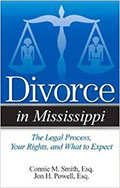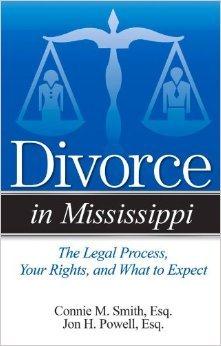REPORT FROM COUNSEL
FALL 2014 ISSUE
HOMEOWNERS' INSURANCE: THE DEVIL RESIDES IN THE DETAILS
Reading and understanding all of the language in a homeowners' insurance policy are not formalities to be skipped over while searching for the signature line. As with any contract, the fine print can have real and lasting consequences, and its contents will control over any contradictory verbal assurances. Taking the time to understand the terms of their policies might have headed off bad outcomes for homeowners in two recent cases.
Business Purposes Exclusion
Joan bought property consisting of a home, two barns, and other outbuildings. She also purchased a homeowners' insurance policy that excluded coverage for any nondwelling structure that was rented out "unless used solely as a private garage." Joan rented the barns to a commercial marina, which used them for winter storage of customers' boats. When one of the barns collapsed due to snow and ice on its roof, Joan submitted a claim for loss of the barn.
The insurer denied coverage, prompting Joan to point out that the rental exclusion should not apply because the marina was using the barn as a "private garage." Her point made sense as far as it went, but the insurer won because of a separate exclusion from coverage for any nondwelling "used in whole or in part for business purposes." Joan's main occupation was as a financial analyst, and she brought in only a few thousand dollars by renting out the barn. But all that was necessary for the business purposes exclusion to apply was that the insured regularly engage in the conduct with an intent to profit.
It was significant for the court that, by failing to disclose her conduct, Joan had prevented the insurer from knowing the risks it was insuring. The purpose of a business pursuits exclusion, after all, is to rule out coverage for a whole set of risks and liabilities flowing from business activity. It did not matter that the damage to the barn was not caused by the boats that were stored there for profit.
"Household" Defined
At the heart of another dispute over homeowners' insurance coverage was what turned out to be an erroneous assumption by the homeowners that "residents of your household" meant any persons living on the same parcel of land, even if in a different house from that occupied by the insureds. Ken and June lived in one house and their daughter and 10‑year‑old grandson lived rent‑free in another house that was only 20 feet away and had the same mailing address. The close‑knit family often shared meals and activities, and Ken and June regularly cared for their grandson.
When the grandson accidentally shot a playmate with a rifle, Ken and June submitted a claim under their homeowners' policy, which covered "residents of your household who are your relatives." The insurance company succeeded in arguing that it had no obligation to defend the grandson in a suit for his friend's injuries because he was not a resident of Ken's and June's household.
In legal terminology, a "household" is a collection of persons living together as a unit under one roof or within a single "curtilage." "Curtilage" is a technical term for the area next to a house that is inside the same enclosure, is used for the intimate activities of the house, and is protected from observation by passers‑by. The house where the grandson lived did not meet any of these criteria so as to make the grandson part of Ken's and June's "household." The four individuals in this case probably constituted a household in many respects and for many purposes, but not in the context of interpreting the homeowners' insurance policy.
"CYBERSMEAR" LAWSUITS
The free‑wheeling give and take in various online forums is leading to more defamation claims by individuals and businesses. Given that so many online speakers are anonymous, however, Internet service providers sometimes become trapped between the speaker and his offended subject. Before the alleged victim can seek redress, the perpetrator must be identified, and providers often resist divulging such information. Courts are still in the early stages of setting rules for these legal contests.
An electronics company brought an action in California against an anonymous individual who allegedly had trashed the company's publicly traded stock on an Internet message board. Among other comments, the secretive critic had said that the company produced "low tech crap" and that its president was manipulating stock prices. In its efforts to identify the speaker, the company discovered that his online name was registered with a service provider with headquarters in Virginia.
When the plaintiff sought permission from a Virginia court to examine the provider's records, the request was met with stiff resistance. The provider argued that it would infringe on the constitutional right to speak anonymously if it were forced to reveal subscriber information. Citing the principle that the courts of one state generally should respect court orders from a sister court, the Virginia court allowed the review of the provider's records. The right to free speech was not an impediment to the court's ruling, as "the constitutional guarantees of free speech afford no more protection to the speaker than they do to any other tortfeasor who employs words to commit a criminal or civil wrong."
Wounded by disparaging comments posted anonymously on an Internet message board, another company similarly sought to unmask its detractors by forcing information from a provider. In that case, the court saw more merit in the free speech defense raised by the provider, but it did not completely block the request for subscriber information. The court balanced the right to speak anonymously with the right of the injured company to protect its proprietary interests and its reputation.
The result was a compromise of sorts: The company could gain access to the speakers' identities only if it first showed to the court's satisfaction that it could make out a plausible defamation case against them. This meant exactly identifying the offending statements and demonstrating how they harmed the plaintiff. In this case, the critics remained safely in the dark because the company could not substantiate its claims that the comments adversely affected its stock price and its hiring practices.
AGE DISCRIMINATION IN EMPLOYMENT
The combined effects of an aging population and a sluggish economy have led to an increase in lawsuits alleging age bias in the workplace. The Age Discrimination in Employment Act (ADEA) prohibits age discrimination in the employment of persons who are at least 40 years old. The ADEA covers most private employers of 20 or more persons. It forbids age discrimination in advertising for employment, hiring, compensation, discharges, and other terms or conditions of employment. Retaliation against a person who opposes a practice made unlawful by the ADEA or who participates in a proceeding brought under the ADEA is a separate violation.
The ADEA takes into account that sometimes there is a correlation between age and the ability to fulfill the requirements of a job, and that even older workers must comply with employers' rules and requirements that have nothing to do with age. An employer does not violate the ADEA if it takes an otherwise prohibited action where age is a "bona fide occupational qualification" necessary to the operation of a particular business. Nor is it a violation to differentiate among employees based on reasonable factors other than age or to fire or discipline an employee for good cause.
Before suing in court, an aggrieved person first must allege unlawful discrimination in a charge filed with the Equal Employment Opportunity Commission (EEOC) and then wait 60 days to allow the EEOC an opportunity to resolve the dispute informally before taking further legal action. Court remedies include injunctions (court orders stopping a discriminatory practice), compelled employment, promotions, reinstatement with back pay and lost benefits, and an award for attorney's fees and costs of bringing the suit. If a court finds that an employer's violation of the ADEA was willful, it may also award liquidated damages equal to the out‑of‑pocket monetary losses of the plaintiff.
It is not essential to an ADEA lawsuit that there be a "smoking gun" in the plaintiff's favor in the form of derogatory age‑based comments about older employees. In fact, remarks of that kind will not support liability if they have no connection to the challenged employment decision. In a recent lawsuit brought by an on‑air television reporter who was fired, a boss's comment that "old people should die" was an insignificant stray remark because it was made about the boss's own father. On the other hand, it was very helpful to the plaintiff's case that the same boss had stated repeatedly that she wanted to "go with a younger look" and she did not like having an older man appearing on the news.
Employers sometimes select older workers to be terminated as a money‑saving measure, given their generally higher compensation and perhaps their being close to vested retirement benefits. There is no ADEA violation in a decision that treats employees differently because of something other than age, such as money. An employer will not be liable under the ADEA for terminating an employee solely to prevent his pension benefits from vesting. (That conduct might very well violate ERISA, however.) Such a scenario is distinguishable from situations in which employers face ADEA liability because they have made decisions based on the stereotype that productivity and competence always decline with old age.
FREELANCERS' ARTICLES ARE NOT FREE
The U.S. Supreme Court has given a victory to freelance authors of newspaper and magazine articles, and a defeat to some major publishers of their work. The publishers hired the authors as independent contractors who would contribute articles to what is known in copyright law as a "collective work," that is, a newspaper or magazine. Under federal copyright law, the publishers were the owners of the copyright in the collective work, giving them the right to reproduce and distribute the contributions as part of the collective work or any revision of that work. The writers themselves, however, retained the rights to their individual articles.
The dispute arose when the publishers, without obtaining the authors' permission or agreeing to provide extra compensation to them, licensed the rights to copy and sell articles to a computerized database of periodicals and to the producer of CD‑ROM products. When the authors claimed an infringement of their copyrights in their articles, the publishers defended by arguing that making the articles available on line or in a CD‑ROM form constituted simply a "revision" of the collective work that was within the copyright of the collective work held by the publishers.
The Supreme Court sided with the writers. The newly created databases no longer presented and distributed the articles as part of the collective work in which they first appeared, or as part of a revision of that work. Instead, the articles stood alone and out of their original context. Each article had become merely a minuscule part of an ever‑expanding database. As the Court put it, "The database no more constitutes a 'revision' of each constituent edition than a 400‑page novel quoting a sonnet in passing would represent a 'revision' of that poem[.]" Therefore, the electronic reproduction of the authors' works could not be allowed without their permission.
THE MARITAL DEDUCTION: A VALUABLE ESTATE PLANNING TOOL
The federal estate tax marital deduction is one of the most important estate planning tools available to a married couple. The basic marital deduction rule is that, upon the death of the first spouse, the value of any interest in property passing to the surviving spouse is deducted from the decedent spouse's gross estate. This means that the amount passing to the surviving spouse escapes taxation in the decedent spouse's estate.
There is no limitation on the value of property that can qualify for the marital deduction. By transferring sufficient assets to the surviving spouse in the proper manner, estate tax liability upon the first spouse's death can be completely avoided.
At first view, the estate tax marital deduction may seem to be a government giveaway. It is not. The advantage afforded is not the total avoidance of estate tax on the transferred property but, rather, the deferral of such tax. The marital deduction requires that the transfer of assets to the surviving spouse be made in such a way that those assets are exposed to estate tax liability in the surviving spouse's estate.
The obvious advantage of deferring the estate tax liability is that the surviving spouse will have the use of the tax dollars that would otherwise have been paid to satisfy the tax liability of the first spouse's estate. The deferral of tax liability also postpones the possible need to sell off assets that the surviving spouse might wish to preserve in order to obtain funds to satisfy the tax liability.
Transfer by Will
A key decision is the selection of the type of transfer to be made to the surviving spouse. The simplest form of transfer that qualifies is the outright transfer of assets by will. The problem with such a transfer is that it saddles the surviving spouse with the responsibility of managing the assets and also exposes him or her to possible pressures from relatives, creditors, or charities to transfer the property for their benefit.
Transfer by Trust
The marital deduction law permits, with no loss of the deduction, the transfer to the surviving spouse in trust. There are two basic types of trusts that have become the standard means for taking advantage of the deduction without burdening the surviving spouse with the problems of outright ownership of the first spouse's estate.
The first type of trust is known as a "power of appointment trust." The property is placed in trust under the will, giving the surviving spouse a life interest in the income generated by the trust and a power to give the assets in question to anyone, including to himself or herself or to his or her estate. This power can be restricted so as to be exercisable by the surviving spouse only by will and still qualify for the marital deduction.
The second type of trust, rather than giving the surviving spouse the power to ultimately dispose of the assets, permits the decedent spouse to designate the ultimate recipients of the property qualifying for the marital deduction. This trust is known as the Qualified Terminable Interest Property (QTIP) trust. The surviving spouse must receive a lifetime income interest in the property. No one other than the surviving spouse may have any rights in the trust assets during the surviving spouse's lifetime. The decedent spouse's personal representative must elect QTIP treatment on the estate return. The crucial feature of the QTIP trust is that the decedent spouse retains the ability to control the course of ownership of the assets qualifying for the marital deduction.
Coordination with the Lifetime Credit
It has become standard estate planning practice to coordinate the estate tax marital deduction with the unified credit against the estate tax. The unified credit against the federal estate tax allows an individual to pass a certain amount of assets free from estate tax liability regardless of the identity of the recipients. The basic credit is now $5,000,000, adjusted for inflation. For decedents who died in 2013, the amount is $5,250,000. For decedents dying in 2014, the amount is 5,340,000. In a will, the amount allowed to pass tax‑free is normally transferred under what is known as a "credit shelter" or "by‑pass" trust. Then, the transfer under the marital deduction rules is made so as to prevent the taxation of the remaining assets.
Clearly, in the case of a married couple owning sufficient assets to make estate taxation a possibility, estate planning must take into account the marital deduction rules and the associated tax savings. Given the complex nature of the many rules involved, you should always seek the guidance of a qualified attorney for any estate planning needs.
CAPPED COMMISSIONS
As a sales representative for a computer software company, Richard received an annual salary and sales commissions as determined by a compensation plan that was part of his contract. There was a specific formula for how commissions were to be calculated, but language in the plan gave the company broad authority to make a final decision about compensation and to change the plan at any time. For sales commissions, in particular, the employer reserved the right to review any transaction generating a commission beyond a salesman's annual quota and to determine the "appropriate treatment" of it.
When Richard scored an especially large sale, the company decided that its "appropriate treatment" was to cap Richard's commission at an amount that was less than he expected under the usual formula. The company's position was that the large commission expected by Richard was not justified because it arose from a single transaction on which Richard had not done as much work as he claimed, and because he had only been employed by the company for eight months. Richard quit and sued for breach of contract.
A federal court ruled in favor of the employer. The language in the compensation plan was broad, but it was not ambiguous. The whole thrust of the document was to leave determination of the commissions to the employer's discretion, notwithstanding that the plan identified some forms of appropriate treatment of commissions.
When a contract leaves a decision up to one party's discretion, it is nearly unassailable in court. A court may intervene if that party is guilty of fraud, bad faith, or a grossly mistaken exercise of judgment, but Richard did not make those arguments. Despite the fact that it was arguably unfair, the court ruled that such a decision was "out of our reach."





